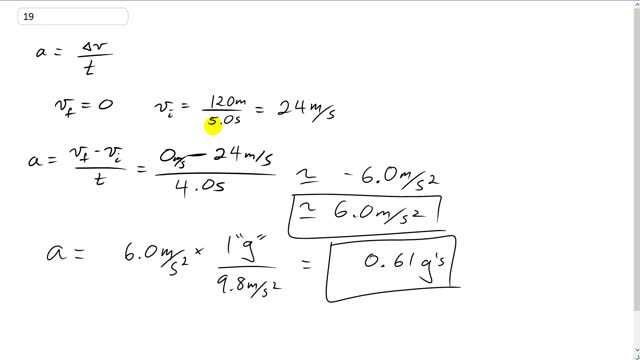
A sports car moving at constant velocity travels 120 m in 5.0 s. If it then brakes and comes to a stop in 4.0 s, what is the magnitude of its acceleration (assumed constant) in , and in g's ?

In order to watch this solution you need to have a subscription.
This is Giancoli Answers with Mr. Dychko. The acceleration of this sports car is gonna be the change in velocity divided by time. So the final velocity is zero and the initial velocity is 120 meters divided by 5 seconds that's 24 meters per second. So we take the difference there, zero minus 24 meters per second divided by the time it spends braking— 4 seconds— and we get negative 6.0 meters per second squared and the magnitude of that acceleration is 6.0 meters per second squared. And then expressing that in units of g's there's 1 g for every 9.8 meters per second squared and so these meters per second squared's, you can think of it as a single package unit cancel and we are left with 0.61 g's is the acceleration.
Why did the magnitude become positive? Wouldn't it have remained negative because the car is braking to a complete stop, thus decreasing its acceleration?
Thanks!
Hi swedesanddanes, the answer to your question is in the word magnitude. That word means size. It means ignore direction, and so ignore the negative sign. magnitudes are always positive.
All the best,
Mr. Dychko